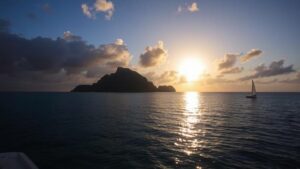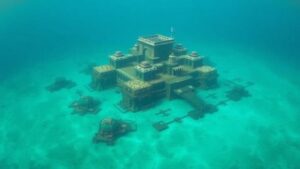Investigating the “Moai Statues” of Easter Island and the mystery of their transportation.
Investigating the Moai Statues of Easter Island and the Mystery of Their Transportation
The Moai statues of Easter Island, known locally as Rapa Nui, are one of the most iconic symbols of Polynesian culture and history. These monumental statues, completed between approximately 1400 and 1650 AD, display the impressive artistic abilities of the Rapa Nui people. But, the methods used to create and transport these massive stone figures–some weighing more than 80 tons and standing over 30 feet tall–remain a subject of intrigue and debate among archaeologists and historians.
The Origin and Significance of Moai Statues
Constructed primarily from volcanic tuff, the Moai are distributed across Rapa Nui, with over 900 statues identified on the island. Although they are often associated with ancestor worship, their significance extends to social and political power structures within Rapa Nui society. The statues were erected on stone platforms known as Ahu, which also served as burial sites for chieftains. This connection to leadership is evident in the fact that those with larger, more elaborately designed Moai likely had higher social standings.
The Transportation Conundrum
The transportation of these colossal statues from the quarry at Rano Raraku to their Ahu sites is one of the most compelling puzzles related to the Moai. Given the islands limited resources, questions arise about how the Rapa Nui managed to move such massive stones across rugged terrain. Several theories exist regarding how these sculptures were transported:
- Rolling on Logs: One of the earliest theories suggested that the statues were rolled on logs. While feasible for smaller statues, this method proved impractical for the larger ones, given the weight and size.
- Sliding on a Base: Recent experiments suggest that the Moai could have been slid on a wooden sled or a base made of smaller stones, significantly reducing friction and making movement easier.
- Walking Technique: A more innovative theory proposed that the Rapa Nui used a walking technique, where groups would rock the statues back and forth, allowing them to waddle to their destinations. This hypothesis gained traction after demonstrations in controlled environments showed success.
Recent Findings and Research
Recent archaeological research has added layers to our understanding of Moai transportation. A study conducted in 2019 utilized both historical records and experimental archaeology to conclude that the statues positioning might have been prioritized over a single transportation method. An analysis of the terrain and resources indicated that the approach likely varied based on logistical accessibility, travel distance, and statue weight.
Plus, geophysical surveys have revealed that many Moai were originally partially buried due to land erosion and sediment accumulation. This insight has shed light on construction practices and how the Rapa Nui adapted to their environment over centuries.
Environmental and Cultural Impact
The creation and transportation of Moai had a significant impact on the islands environment and society. The deforestation of Rapa Nui, largely attributed to the extensive use of wood for statue transportation and construction, led to soil degradation and reduced agricultural productivity. This environmental challenge likely contributed to social strife, population decline, and the eventual collapse of the Moai construction tradition.
It is essential to recognize that alongside these challenges, the Moai embody a significant cultural heritage that speaks to the ingenuity and resilience of the Rapa Nui people. Efforts to preserve both the statues and the traditional knowledge of their significance are ongoing, providing valuable lessons for contemporary environmental stewardship.
Conclusion: A Legacy of Mystery and Resilience
The Moai statues of Easter Island continue to capture the imagination of scholars and tourists alike. The mystery surrounding their transportation reflects not only the ingenuity of their creators but also the broader complexities of Rapa Nuis historical and environmental context. As researchers delve deeper into the past, the exploration of these ancient statues serves as a reminder of the balance between human achievement and environmental sustainability.
In summary, understanding the Moai and their transportation offers valuable insights into the rich narrative of Easter Islands history, the adaptability of its people, and the lessons we can draw for our modern society.



